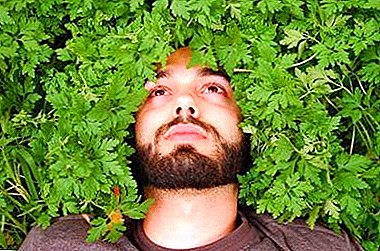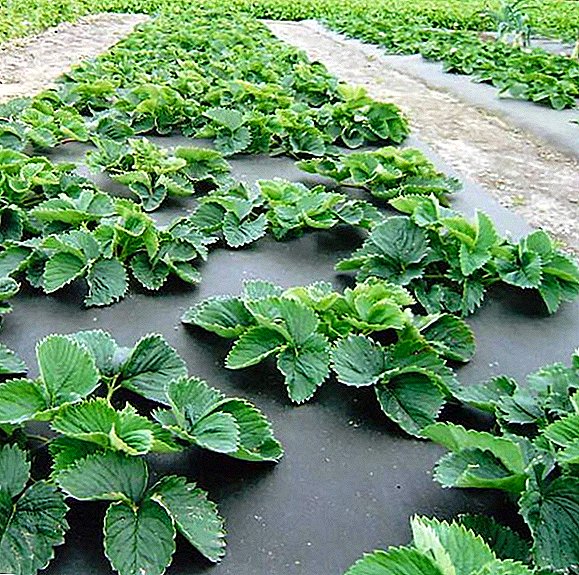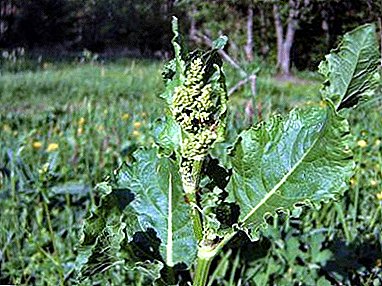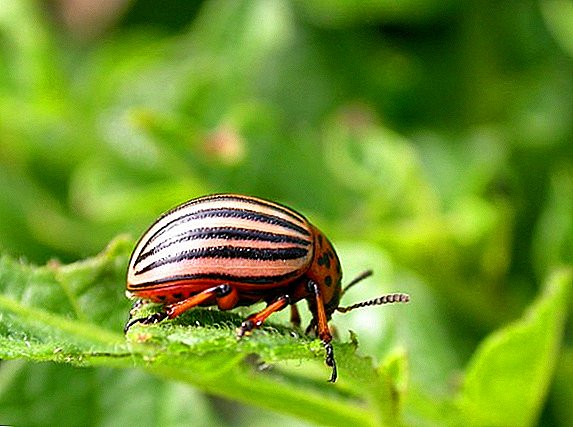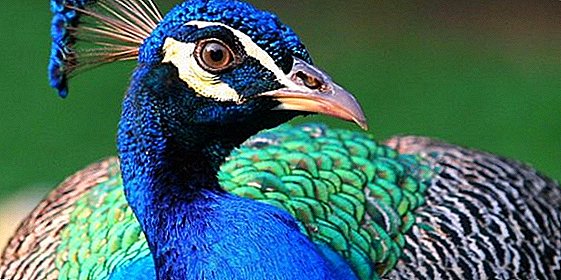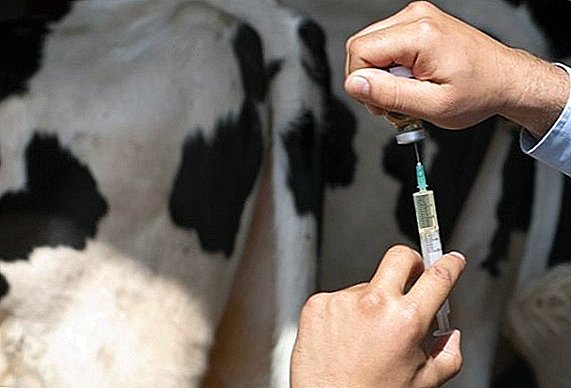 Any domesticated animal needs to create the most comfortable conditions for a full-fledged life activity, and especially for those who require a certain "fee" in kind for their living. Such rules must be strictly followed by those who own a quail farm. About when and how many quails rush, as well as indicators of egg production and ways to improve them, we will discuss in this article.
Any domesticated animal needs to create the most comfortable conditions for a full-fledged life activity, and especially for those who require a certain "fee" in kind for their living. Such rules must be strictly followed by those who own a quail farm. About when and how many quails rush, as well as indicators of egg production and ways to improve them, we will discuss in this article.
When quails begin to rush.
For a start it is worth understanding that quails, like many animals, are tied to the season of the year and to their biocycle of life, which affect the frequency and volume of egg-laying. Also, the rate of egg production depends on the age of the quail.
The last factor will not make you incur losses, as these birds begin to rush already at 35-40 days of their life, which makes them quite profitable.
During the first month after puberty, the bird can produce no more than 8-10 eggs. Next, with each month, this figure will gradually increase to 25-30 eggs per month from one individual, which will be about 300 units per year. Quails rush, as a rule, in the afternoon or closer to sunset, some breeds do it immediately after eating.
Important! It should be understood that quails are not robots and some breaks between carrying may occur. As a rule, this is observed in the following pattern: 5-6 days the female lays 1 egg each, after which it takes a break for 1-3 days. If the break lasts longer than three days, you can begin to worry and seek the help of an ornithologist.Video: when quails begin to rush These birds rush year-round with some breaks and lows (for example, in the winter season, if you do not create optimal warm conditions and a light cycle).
Average egg production
The average egg production rate is considered to be 250-300 eggs per year for a young and healthy female. But in nature, everything happens quite differently. How the egg production indicators differ in nature and at home, as well as what factors influence these indicators, further in the article.
In nature
In natural conditions, quails do not need to lay a large number of eggs. This occurs only during the breeding season in spring. Then the female lays from 10 (if she is very young) to 20 (when the female is middle-aged) eggs per season.
Such indicators are due to the natural requirements for each type of animals that are laid at the genetic level, because it is no secret that nature itself regulates populations of animals and birds. 
At home
Breeders have worked well, bringing new breeds of hens among quails. Thanks to scientific advances, it was possible to increase the productivity of hens to 300 and higher eggs during the year. The maintenance of this level of egg-laying is influenced by many factors, including:
- lighting;
- room temperature;
- purity and sterility;
- sufficient ventilation, but without drafts;
- optimum air humidity;
- selected feed;
- no stress (noise, other large animals and birds, etc.).
Important! It is impossible to allow a large crowding of quails in a cage: in crowding they will be worse to rush. On 1 square. a meter should live no more than 5-6 individuals.

How many eggs do quails bear depending on the breed
In addition to the above factors, the breeding rates of quails are influenced by their breeds, the specifics of which will be discussed later.
Learn more about the best breeds of quail, as well as the most important thing about breeding quail at home.
Japanese
The Japanese species is in second place in performance among all the birds of the quail squad. Their average egg production per year varies in the range of 250-300 eggs, which is considered a very good indicator by many poultry farmers.
The weight of the egg is about 9-11 grams, which is the average among all quail. The fertility rate in this species is 80-90% - this indicates a high efficiency of this species as hens. 
Pharaoh
Despite the fact that this subspecies applies to those who are fed for meat, yet their egg-laying rates are not so far behind the Japanese, namely, up to 220 eggs per year. It should be noted that the mass of these eggs is much higher than the previous ones and is 12-16 grams.
This indicator is one of the highest among quail. Like the Japanese quail, the pharaoh's fertility rate is 80-90%.
Did you know? Scientists have long been proven that chicken eggs are significantly inferior in nutritional value and usefulness of quail. And this statement was made on the basis of numerous studies, which revealed that five quail eggs, on a weight equal to one chicken, contain five times more potassium, 4.5 times - iron, 2.5 times - vitamins B1 and B2 . Much more in quail eggs of vitamin A, nicotinic acid, phosphorus, copper, cobalt, limiting and other amino acids. In addition, quails in the egg have more protein than other brood birds.

White english
About 270-280 eggs per year can produce a subspecies of white English quail. And although they are a little behind the Japanese subspecies, their eggs are a little more weighty - 10-11 grams per unit, and the fertility rate of white English quail is 75%. This feature affects the rate of egg production of this species. 
We advise you to read about how to make a cage for quail yourself, how to properly feed the quail, as well as how to get the young quail.
Black english This subspecies has similar previous indicators. Between the white and black English quail differ only in the color of the feather color. The rest of their characteristics are very similar: about 280 eggs per year, with a mass of 10-11 grams per unit, and 75% is the coefficient of fertility. 
Tuxedo quail This gallant aristocratic subspecies of quails also carry 280 eggs a year with a mass of 10-11 grams, but they are distinguished from previous counterparts by the fact that the coefficient of fertility is much higher and amounts to 80-90%. 
Familiarize yourself with the beneficial properties of quail eggs.Marble In the range of 260-280 eggs per year, marble quail is carried. It is important to note that this species bears the smallest eggs, the weight of which does not exceed 9 grams. In addition, the fertility rate can be attributed to unsatisfactory, because it does not exceed the 70% threshold.

Manchurian Up to 220 eggs per year can carry Manchurian quail. But do not immediately exclude this subspecies as unsuitable, because the weight of their eggs stands out significantly from the rest of the quail and varies in the range of 16-18 grams, which makes this type of quail a record among the rest in terms of the mass of eggs.
An 80% fertility rate is also included in the list of benefits for this species.
Did you know? The very first representatives of the fauna, which were born in outer space, were quail, whose eggs with embryos in the amount of 60 pieces were taken by astronauts into flight. This event occurred in the early spring of 1990. Being in an incubator specially equipped on a spacecraft, all embryos developed perfectly and at some point all 60 chicks hatched from eggs. Due to this, it was proved that cosmic radiation had no effect on small embryos and they remained alive.

Estonian
The Estonian subspecies, which can carry up to 320 eggs a year, closes the list of the best laying hens among all types of quails, which makes it an undoubted record-holder in quantitative indicators of egg production. With an egg mass of 12 grams and a fertility rate of 95%, this species is considered the best of all quails. 
How to increase egg production: proper bird care
But the above indicators of egg production are not yet the limit. They can also be changed in the direction of growth with the right approach and ensuring proper conditions for the quail. How to achieve this, we will talk further.
Conditions of detention
The main factors for the successful maintenance of quail are lighting, temperature and humidity, ventilation and the absence of drafts, as well as stressful situations. Requirements for light in quail are special.
They need 14-15 hours of daylight hours, which means that in winter you definitely have to install additional lighting in the sparrowhouse. At the same time, such artificial lighting should not be too bright, because in this case fights will start between the individuals, which will lead to injuries and rascals.
Video: how to increase egg production quail The only situation where quails can stop being carried is the molting period, which lasts up to 3 weeks in winter. Just at this time, birds especially need additional heating. It is optimal to maintain a temperature regime of + 18 ° C throughout the year to ensure the highest possible laying rate.
Maintaining a humidity of 70-75% is also important for good laying performance. Humidity can be adjusted using special humidifiers or just basins with water.
We recommend that you familiarize yourself with the nuances of keeping geese, guinea fowls, ducks, laying hens, indouka, partridges and pigeons.
But it is also impossible to humidify the air too much, and to prevent this from happening, periodically ventilate the room. It is important to remember that quails are very sensitive to drafts, so use only one air source for ventilation. In addition, it is important to surround the quails with an atmosphere of complete security.  They should not be afraid or afraid of anything, otherwise the birds are capable of depression for a few weeks and stop rushing. It is better to equip a separate room for their maintenance so that quails do not collide with other animals and birds. You also can not make noise in their presence or shout.
They should not be afraid or afraid of anything, otherwise the birds are capable of depression for a few weeks and stop rushing. It is better to equip a separate room for their maintenance so that quails do not collide with other animals and birds. You also can not make noise in their presence or shout.
How to increase the number of eggs by adjusting the food
In addition to the factors of proper care, the chosen feed also affects the egg-laying performance. To do this, use special feed, designed only for quail.
If you use, for example, feed for chickens, egg production rates will consistently decline. The same applies to low-calorie feed, such as dough (grain, crushed with grain crushers or mills without special cleaning) or millet. Be sure to combine the components.
Important! Do not drastically change the compound feed composition. An abrupt change of ingredients can give rise to stress and the termination of egg production in quails for a week or even more.

Try to use only proven and patented feed, which received their recognition among poultry farmers and ornithologists. You can also cook good quail food yourself.
To do this, use a variety of fillers, among them: corn, wheat, soybean meal, fish, herbal and meat and bone meal, dry reverse and many others. But if you are an inexperienced poultry farmer, it is better to use specialized feed lines, which are already pre-staffed for different ages, taking into account all the necessary minerals, vitamins and microelements.
Why birds stop trotting: the main reasons
Birds can stop rushing for many reasons, the main of which we will try to describe for you:
- Lack or excess of light. Both the absence and an excessive amount of normalized daylight can undermine and disrupt the habitual way of life of quails, reducing or completely stopping the laying of eggs.
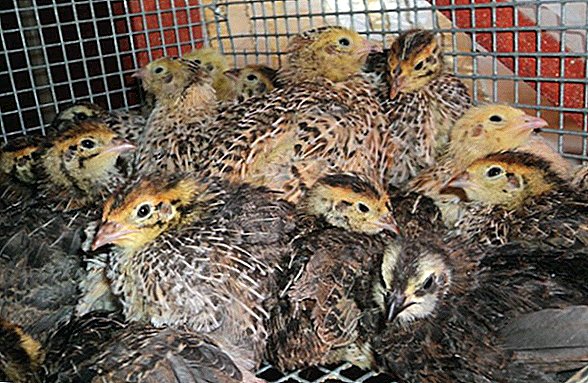 You can not illuminate the sparrowhouse, for example, 18 hours, or neglect additional lighting in winter, when the lighting period is not more than 8-10 hours. The optimum light mode for quails is 14-15 hours.
You can not illuminate the sparrowhouse, for example, 18 hours, or neglect additional lighting in winter, when the lighting period is not more than 8-10 hours. The optimum light mode for quails is 14-15 hours. - Temperature mode. When the temperature in the sparrower drops to + 16 ° C or increases to + 25 ° C, egg-laying rates will decrease significantly. The optimum temperature mode is + 18-20 ° С.
- Draft. This indicator can affect not only the number of eggs, but also appetite, and even premature molting.
- Humidity. Deviation from the norm of 75% by 20% plus and minus can significantly shake the stability of the egg-laying.
- Nutrition. Incorrect dosage, unbalanced feed, or late feeding can change the performance of your quail farm. It is also important to track the presence of a sufficient amount of protein and calcium in the feed, because they are directly related to the quality and number of eggs laid.
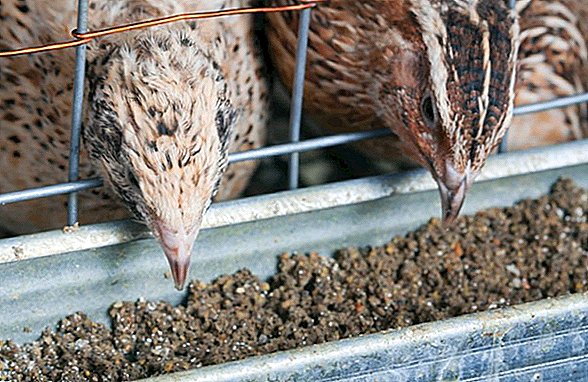
- Overpopulation Too many individuals will also not improve quantitative indicators. The norm is 5-6 individuals per 1 square meter of the sparrowhouse.
- Stressful situations. Such moments can cause prolonged depression in birds, lasting up to 1 month. Stress can cause anything: transportation, other animals, harsh sounds, noise, changes in the composition of the feed, draft and much more.
- Shedding. During this period, quails do not rush by nature, and you will not affect this factor.
- Change of power. Replacing the dominant male in the flock will also delay egg laying by about 1 week, but this is also a natural process where you cannot do anything.
- Disease. At the first suspicion of the presence of the disease on your farm, you should contact the ornithologist or veterinarian.
- Old age. Like all living creatures, quails also have their own life span. Starting from 10 months, the quail will reduce its activity, but will continue to sweep up to 30 months of age.
Video: quailing errors
Breeding of any animals or birds, first of all, is associated with risk and great responsibility. To feel relaxed and not worry about your pets, you should be very careful about the arrangement of the sparrowhawk and its supply with all the necessary elements to make the quails life on your farm comfortable, healthy and long. And they, in turn, will delight you with high efficiency and abundant egg-laying all year round.
Reviews from the network




 You can not illuminate the sparrowhouse, for example, 18 hours, or neglect additional lighting in winter, when the lighting period is not more than 8-10 hours. The optimum light mode for quails is 14-15 hours.
You can not illuminate the sparrowhouse, for example, 18 hours, or neglect additional lighting in winter, when the lighting period is not more than 8-10 hours. The optimum light mode for quails is 14-15 hours.
